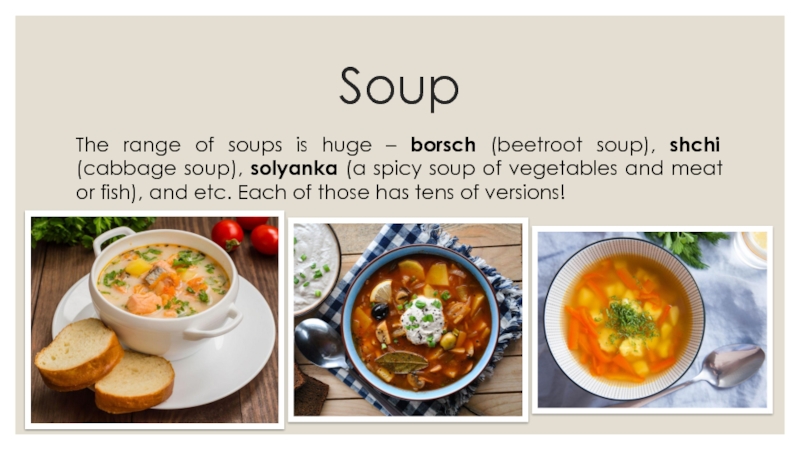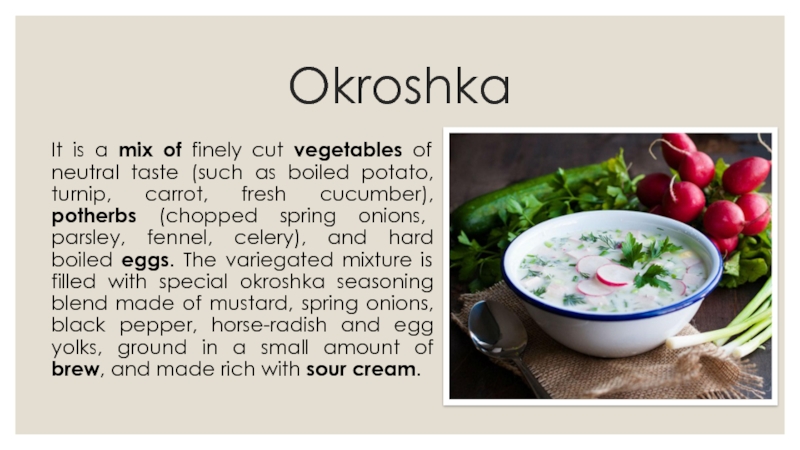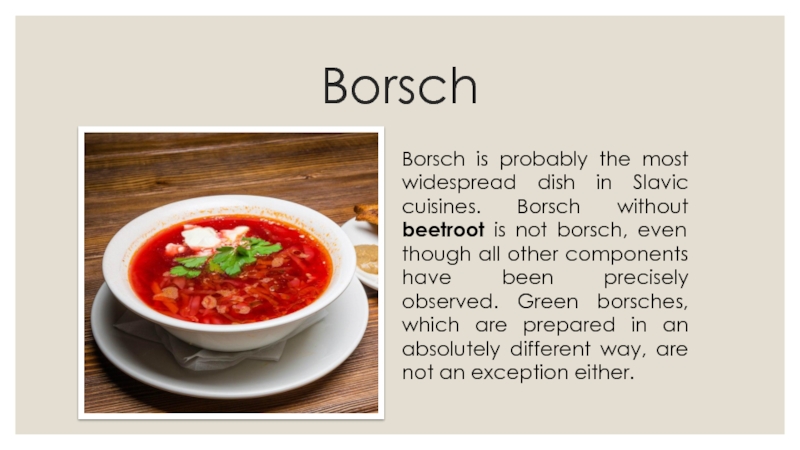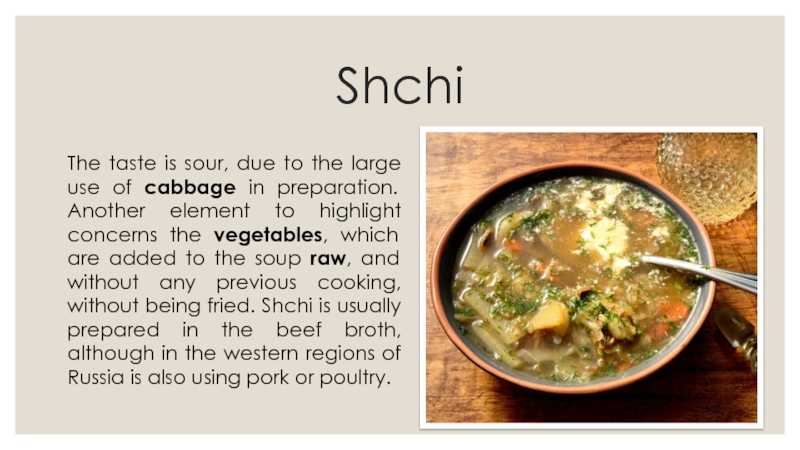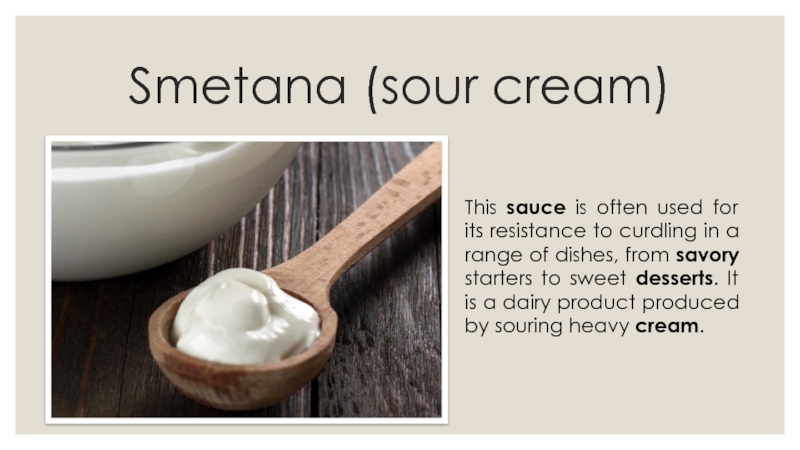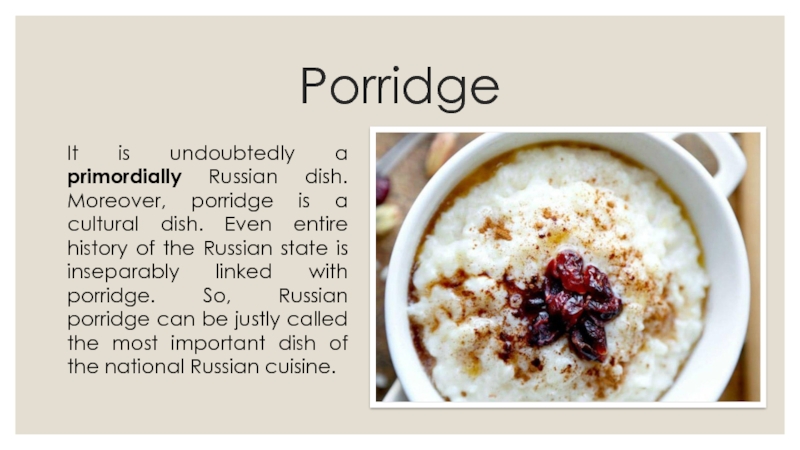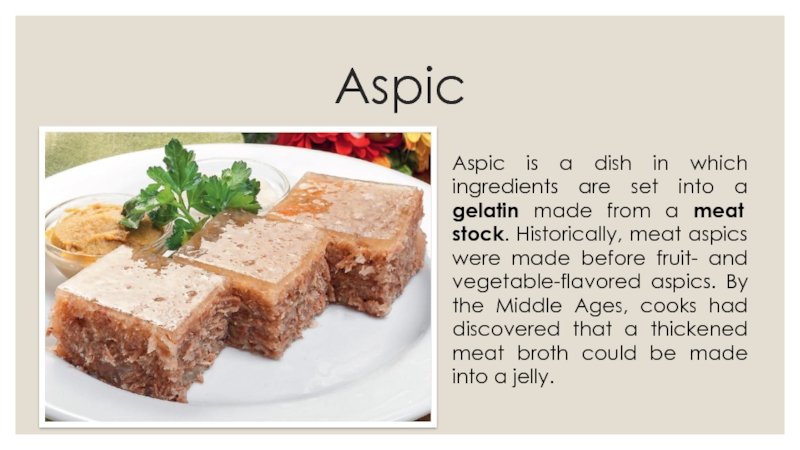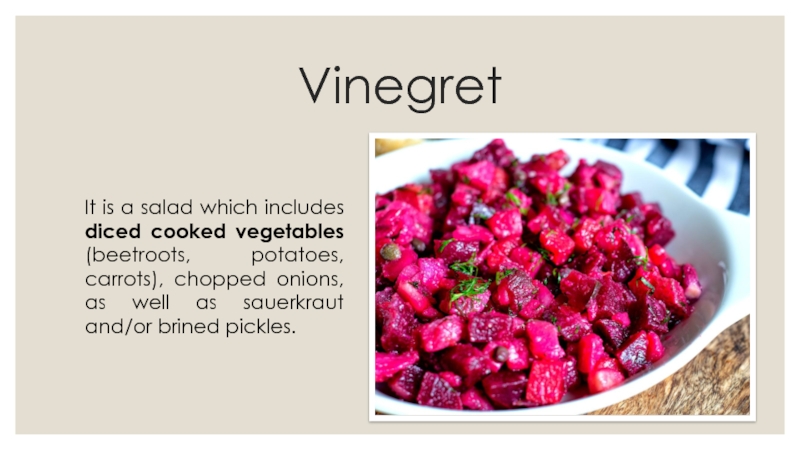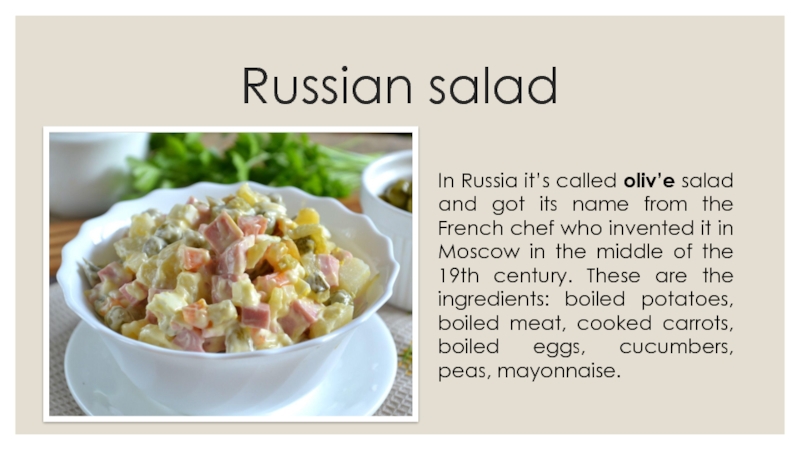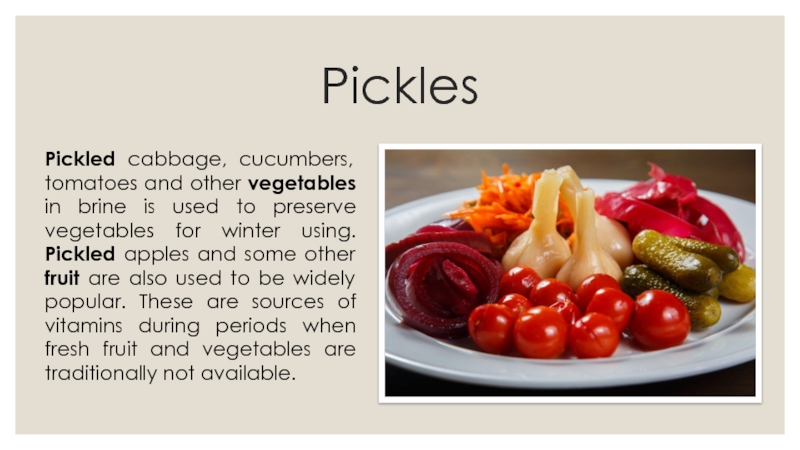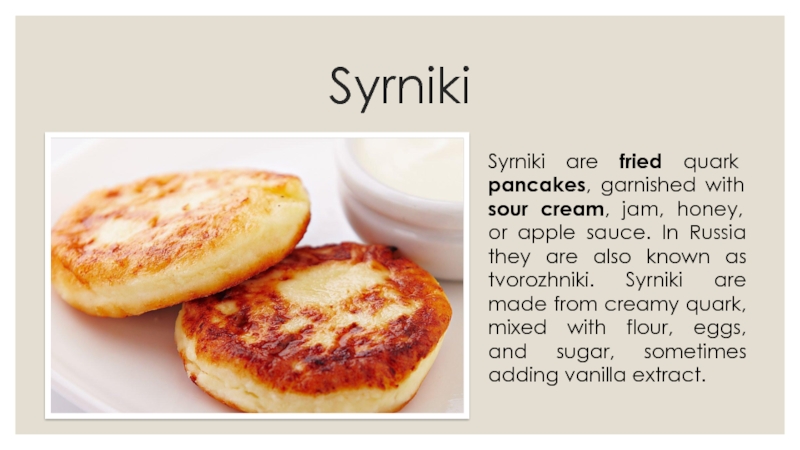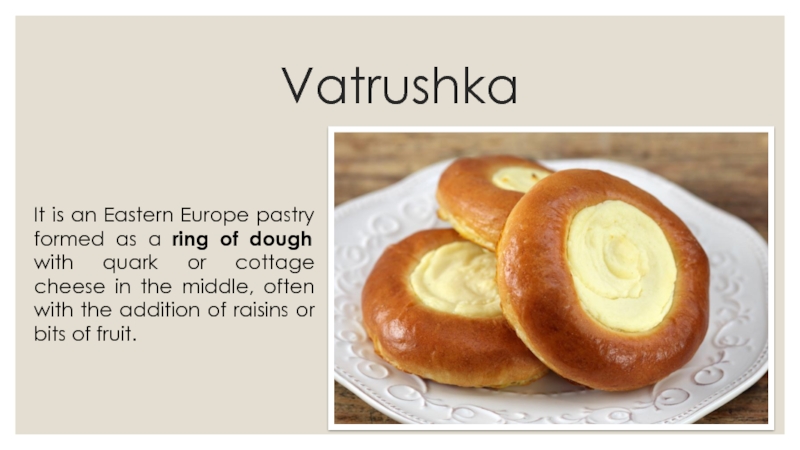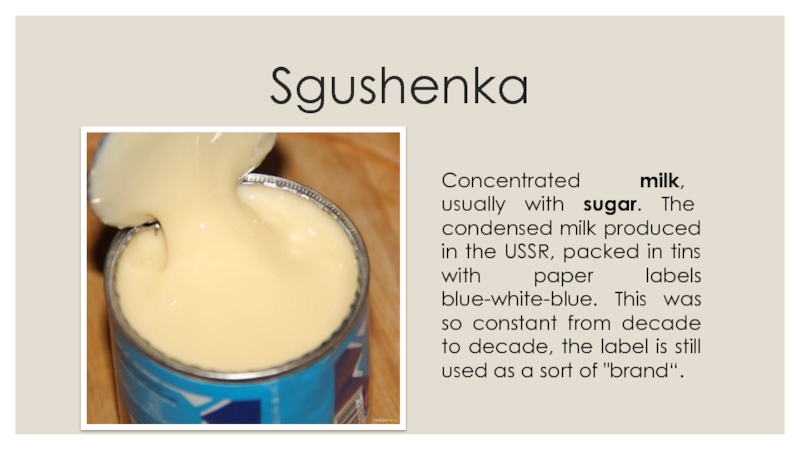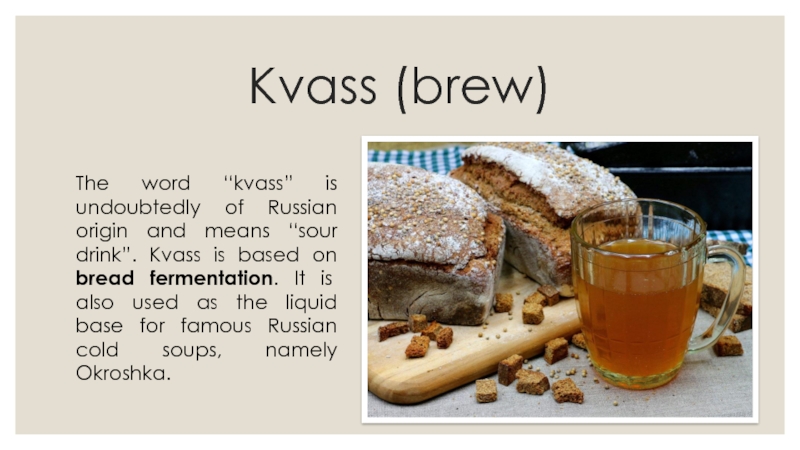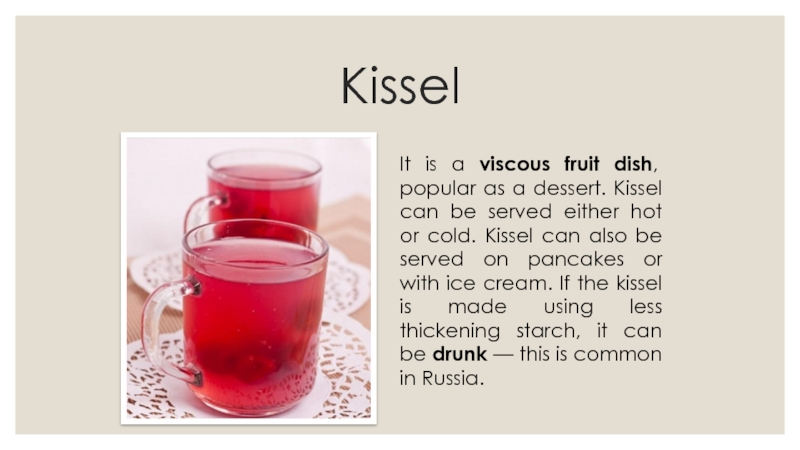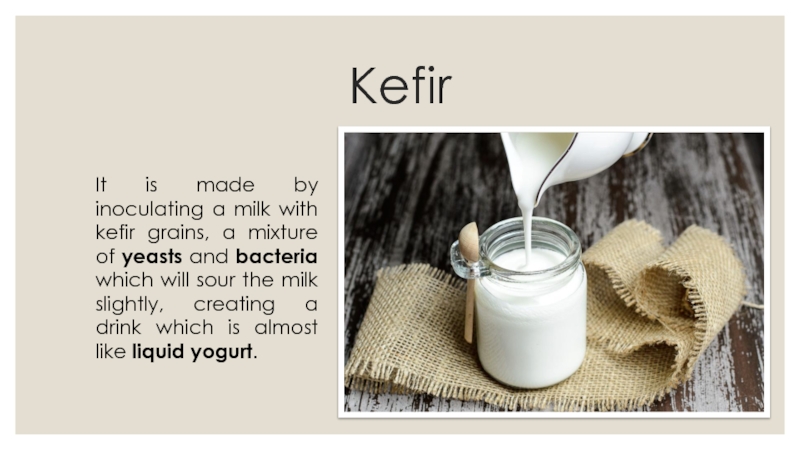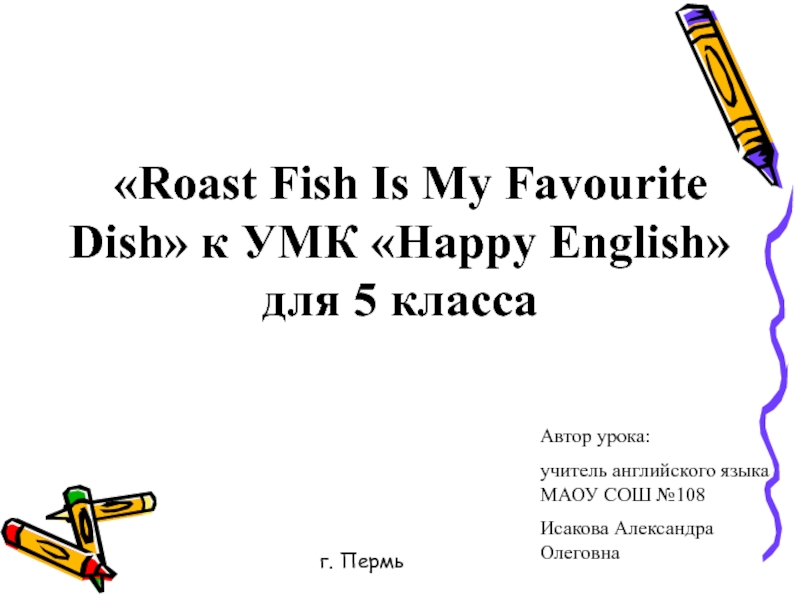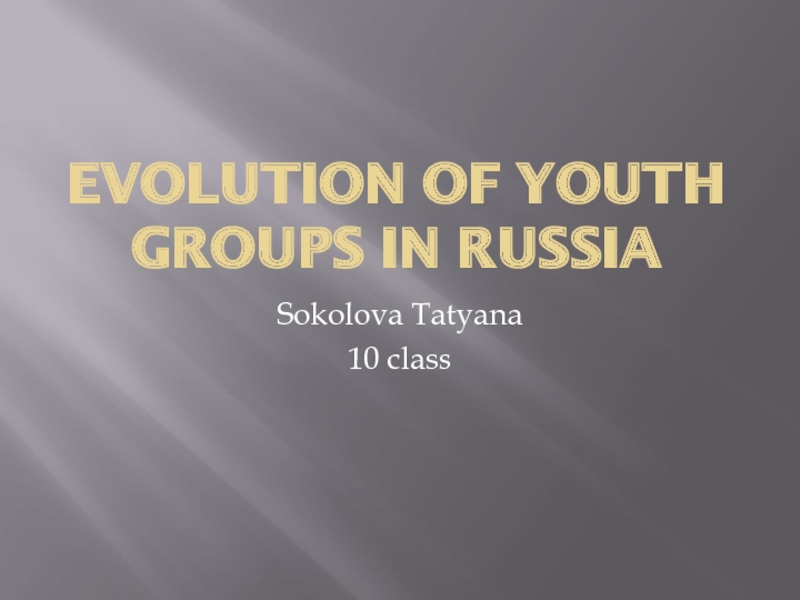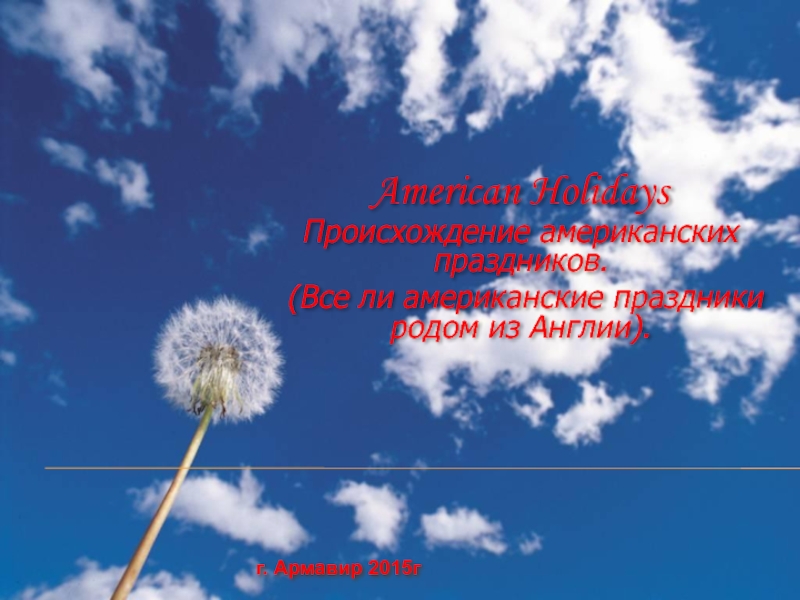Слайд 1Russian cuisine
History and traditional dishes
Слайд 2The page of history
Unfortunately, not so many exact recipes of
ancient and medieval dishes of the Russian cuisine have come
down to us. The first known cook book in Russian history dates back to 1547, but it has only enumeration of dishes, without disclosure of components or a way of preparation. However, some recipes seem to be unfading: Russian pancakes (bliny), porridges (kasha), stuffed pies (pirogi), spice cakes and rye bread (black bread), the recipes of which almost have not changed throughout centuries.
Слайд 3Soup
The range of soups is huge – borsch (beetroot soup),
shchi (cabbage soup), solyanka (a spicy soup of vegetables and
meat or fish), and etc. Each of those has tens of versions!
Слайд 4Okroshka
It is a mix of finely cut vegetables of neutral
taste (such as boiled potato, turnip, carrot, fresh cucumber), potherbs
(chopped spring onions, parsley, fennel, celery), and hard boiled eggs. The variegated mixture is filled with special okroshka seasoning blend made of mustard, spring onions, black pepper, horse-radish and egg yolks, ground in a small amount of brew, and made rich with sour cream.
Слайд 5Borsch
Borsch is probably the most widespread dish in Slavic cuisines.
Borsch without beetroot is not borsch, even though all other
components have been precisely observed. Green borsches, which are prepared in an absolutely different way, are not an exception either.
Слайд 6Shchi
The taste is sour, due to the large use of
cabbage in preparation. Another element to highlight concerns the vegetables,
which are added to the soup raw, and without any previous cooking, without being fried. Shchi is usually prepared in the beef broth, although in the western regions of Russia is also using pork or poultry.
Слайд 7Smetana (sour cream)
This sauce is often used for its resistance
to curdling in a range of dishes, from savory starters
to sweet desserts. It is a dairy product produced by souring heavy cream.
Слайд 8Porridge
It is undoubtedly a primordially Russian dish. Moreover, porridge is
a cultural dish. Even entire history of the Russian state
is inseparably linked with porridge. So, Russian porridge can be justly called the most important dish of the national Russian cuisine.
Слайд 9Aspic
Aspic is a dish in which ingredients are set into
a gelatin made from a meat stock. Historically, meat aspics
were made before fruit- and vegetable-flavored aspics. By the Middle Ages, cooks had discovered that a thickened meat broth could be made into a jelly.
Слайд 10Vinegret
It is a salad which includes diced cooked vegetables (beetroots,
potatoes, carrots), chopped onions, as well as sauerkraut аnd/or brined
pickles.
Слайд 11Russian salad
In Russia it’s called oliv’e salad and got its
name from the French chef who invented it in Moscow
in the middle of the 19th century. These are the ingredients: boiled potatoes, boiled meat, cooked carrots, boiled eggs, cucumbers, peas, mayonnaise.
Слайд 12Pelmeni
It is unclear when pelmeni entered the cuisines of the
Siberian people and when they first appeared in Russian cuisine.
One theory suggests pelmeni, or stuffed boiled dumplings in general, originated in Siberia, possibly a simplified adaptation of the Chinese Wonton.
Слайд 13Pickles
Pickled cabbage, cucumbers, tomatoes and other vegetables in brine is
used to preserve vegetables for winter using. Pickled apples and
some other fruit are also used to be widely popular. These are sources of vitamins during periods when fresh fruit and vegetables are traditionally not available.
Слайд 14Syrniki
Syrniki are fried quark pancakes, garnished with sour cream, jam,
honey, or apple sauce. In Russia they are also known
as tvorozhniki. Syrniki are made from creamy quark, mixed with flour, eggs, and sugar, sometimes adding vanilla extract.
Слайд 15Vatrushka
It is an Eastern Europe pastry formed as a ring
of dough with quark or cottage cheese in the middle,
often with the addition of raisins or bits of fruit.
Слайд 16Sgushenka
Concentrated milk, usually with sugar. The condensed milk produced in
the USSR, packed in tins with paper labels blue-white-blue. This
was so constant from decade to decade, the label is still used as a sort of "brand“.
Слайд 17Kvass (brew)
The word “kvass” is undoubtedly of Russian origin and
means “sour drink”. Kvass is based on bread fermentation. It
is also used as the liquid base for famous Russian cold soups, namely Okroshka.
Слайд 18Kissel
It is a viscous fruit dish, popular as a dessert.
Kissel can be served either hot or cold. Kissel can
also be served on pancakes or with ice cream. If the kissel is made using less thickening starch, it can be drunk — this is common in Russia.
Слайд 19Kefir
It is made by inoculating a milk with kefir grains,
a mixture of yeasts and bacteria which will sour the
milk slightly, creating a drink which is almost like liquid yogurt.


